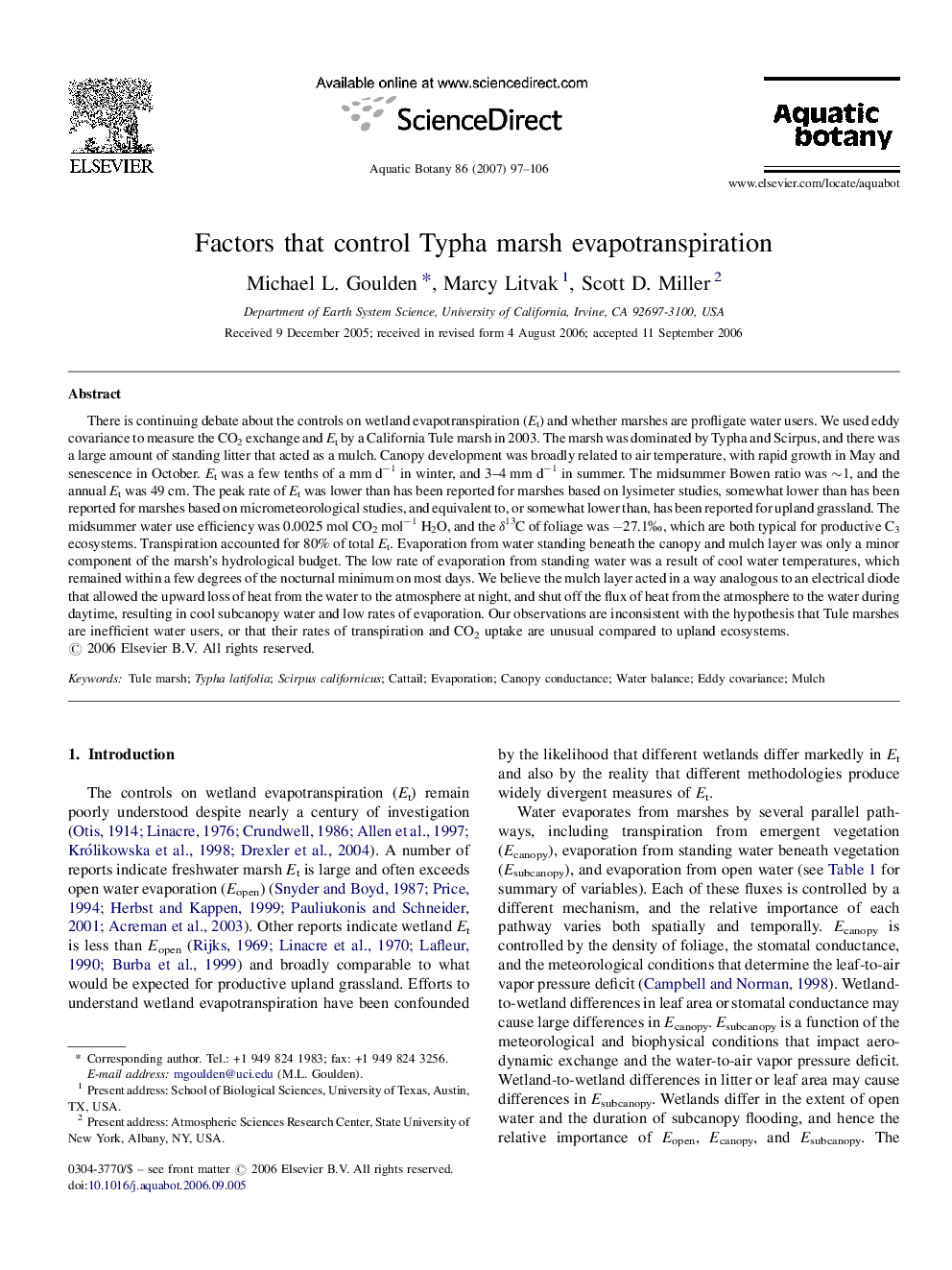| کد مقاله | کد نشریه | سال انتشار | مقاله انگلیسی | نسخه تمام متن |
|---|---|---|---|---|
| 4528646 | 1324320 | 2007 | 10 صفحه PDF | دانلود رایگان |

There is continuing debate about the controls on wetland evapotranspiration (Et) and whether marshes are profligate water users. We used eddy covariance to measure the CO2 exchange and Et by a California Tule marsh in 2003. The marsh was dominated by Typha and Scirpus, and there was a large amount of standing litter that acted as a mulch. Canopy development was broadly related to air temperature, with rapid growth in May and senescence in October. Et was a few tenths of a mm d−1 in winter, and 3–4 mm d−1 in summer. The midsummer Bowen ratio was ∼1, and the annual Et was 49 cm. The peak rate of Et was lower than has been reported for marshes based on lysimeter studies, somewhat lower than has been reported for marshes based on micrometeorological studies, and equivalent to, or somewhat lower than, has been reported for upland grassland. The midsummer water use efficiency was 0.0025 mol CO2 mol−1 H2O, and the δ13C of foliage was −27.1‰, which are both typical for productive C3 ecosystems. Transpiration accounted for 80% of total Et. Evaporation from water standing beneath the canopy and mulch layer was only a minor component of the marsh's hydrological budget. The low rate of evaporation from standing water was a result of cool water temperatures, which remained within a few degrees of the nocturnal minimum on most days. We believe the mulch layer acted in a way analogous to an electrical diode that allowed the upward loss of heat from the water to the atmosphere at night, and shut off the flux of heat from the atmosphere to the water during daytime, resulting in cool subcanopy water and low rates of evaporation. Our observations are inconsistent with the hypothesis that Tule marshes are inefficient water users, or that their rates of transpiration and CO2 uptake are unusual compared to upland ecosystems.
Journal: Aquatic Botany - Volume 86, Issue 2, February 2007, Pages 97–106